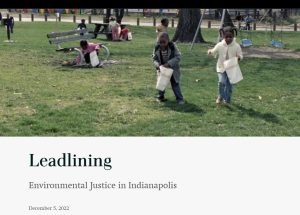12 Activity 3.2 – Accessibility Meets Activism
Audrey Ricke

Associated Readings:
Chapter 9, Holly Cusack-McVeigh, “Reluctant Returns: Repatriating a Poisoned Past.”
Chapter 11, Fabienne Wateau, Carmem Regina Giongo, Daniela Figueiredo, Johnny Reis, and Manuelle Lago, “Unwanted Legacy and Memory of the Milieu: Toxic Materials, Remediation, Habituation (Estarreja, Portugal)”
Targeted Skills:
Communication, Digital Literacy
Directions:
Some of the problems mentioned in Chapter 9 and 11 included not sharing scientific research about toxins as well as reports not being written in a way that was understandable or usable for the general public. Given this problem that spans continents, this activity is an opportunity to practice “translating” results from a test associated with toxic heritage. For this activity, you will create a public facing document that could be used by local residents potentially affected by the toxic heritage.
Step 1:
Find an existing test result or set of results for a toxin associated with toxic heritage, such as one mentioned in this chapter or book. You can work with a museum, NGO, or community leader to locate such a test, search online for sample ones, contact your local university’s lab for a sample one, or work with a museum or other facility to run such a test for material cultural heritage that is suspected or known to contain a toxin.
Step 2:
Translate the results for non-specialists. Depending on your past training, this may require you to pair with another class or someone who can assist with the technical knowledge. (Imagine you are a community member who may not be familiar with such a test and receives a report; this process will give you experiential knowledge of what it takes to interpret reports if a person doesn’t already have a technical background).
Step 3:
Share your results with non-specialists outside your class. Present your “translations” and ask them what parts are confusing and what additional information is needed to make the results useful for them. Based on this feedback, go back to your translation and update it.
Sample Support Document:
Scientific Writing for a Popular Audience by Duke University’s Thompson Writing Program

